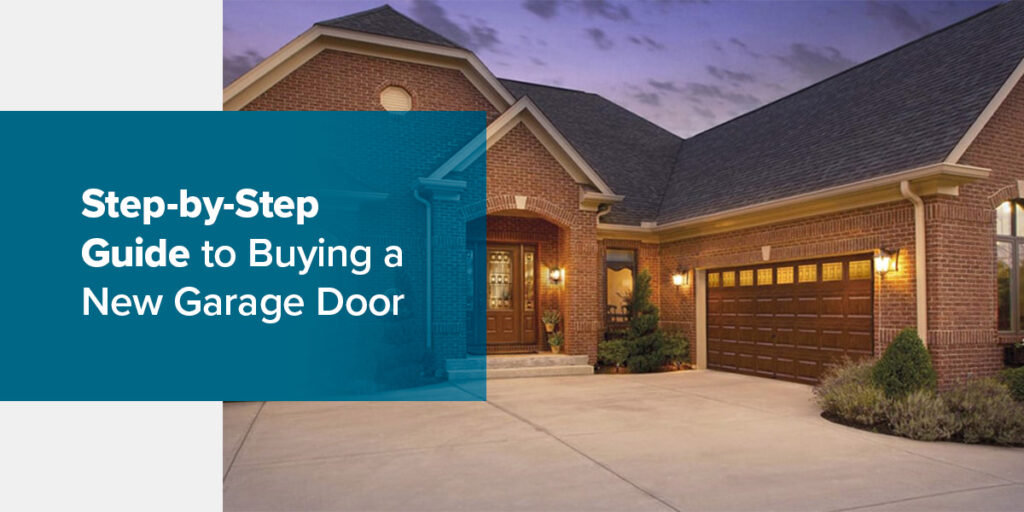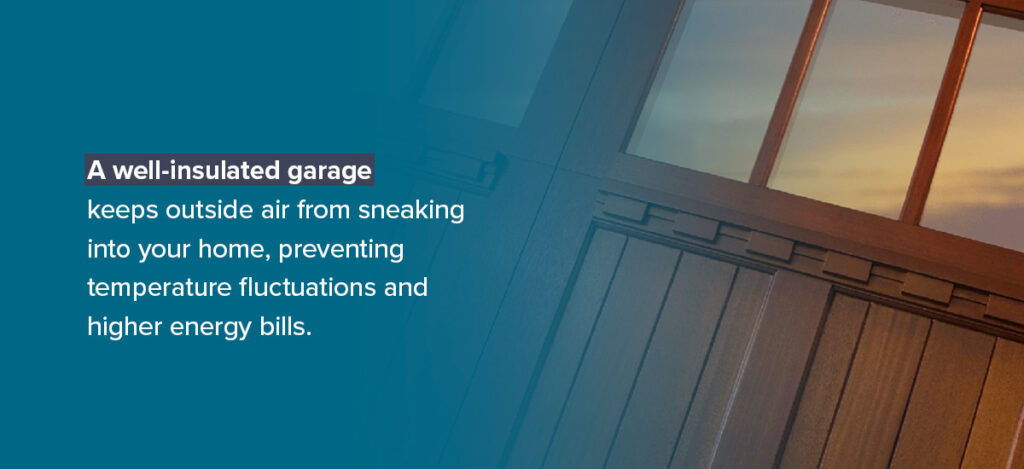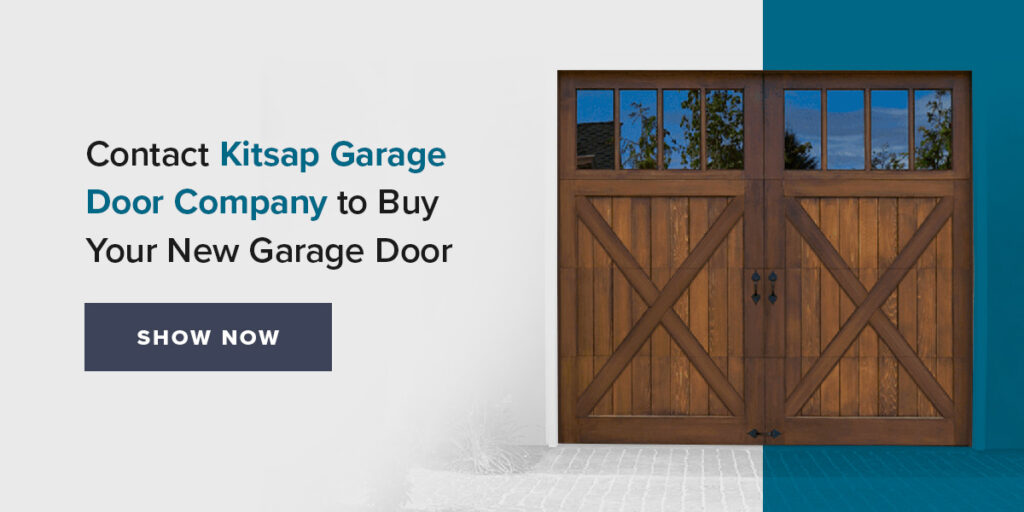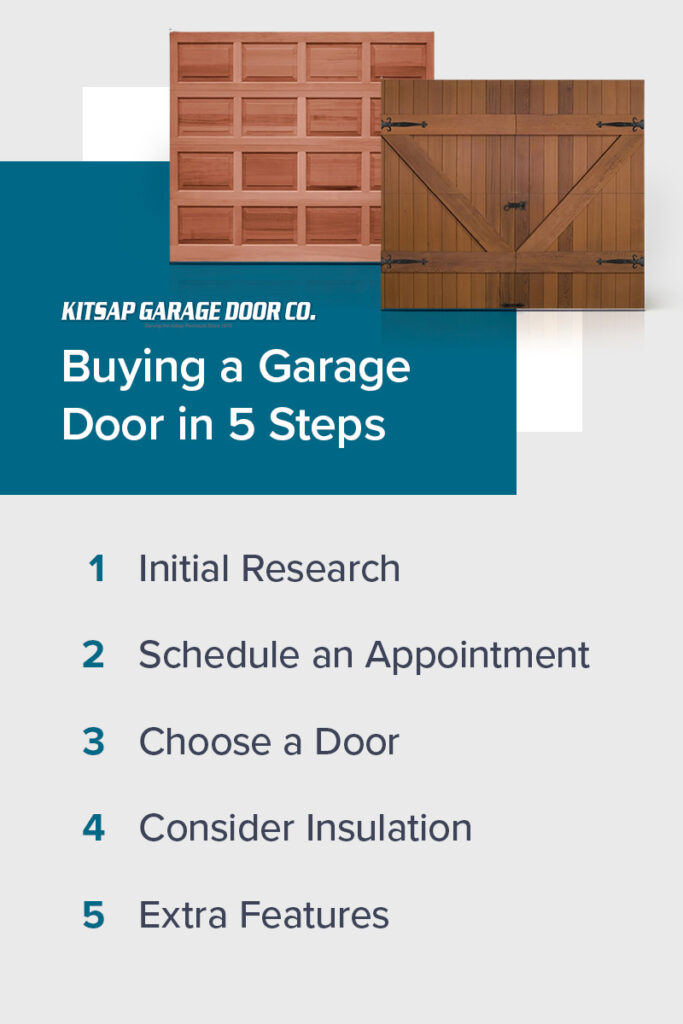
Step-by-Step Guide to Buying a New Garage Door
Buying a new garage door can be a confusing process, and it’s essential to understand what you want before you buy. Your garage door affects your home’s value and energy efficiency and helps keep your home safe. Updated garage doors are good for your family’s finances, too — they’re an excellent selling point for a house, providing a 93.8% return on investment.
Selecting the right model door for your home will take some time and research. There’s a lot to consider when you purchase a garage door, like materials, insulation, extra features, home location and more. Before diving into the options, you should evaluate your budget, what you want out of a door and what styles you like to make the process as smooth as possible. Use this garage door buying guide to help you choose a quality, affordable door for your home.
Getting Started
The first step in purchasing a garage door is understanding all the available options. You’ll have different features to select based on your location, budget and willingness to perform regular maintenance. Understanding the types of garage doors and insulation will help you decide which garage door is best for you.
Garage Door Construction
When you’re ready to buy a new garage door, you’ll want to explore the different construction options. Depending on the material and insulation, garage doors can come in single-, double-, triple- and even quadruple-layered constructions. The door material, fiberglass, vinyl coating and insulation to are layered to improve energy efficiency. The more layers in a garage door, the better its weather resistance, soundproofing and durability.
While more layers mean better insulation and protection, they come with the drawback of higher costs. Doors with more layers tend to be more expensive. When creating your budget, you’ll want to look at the layers, material and insulation options that best fit your home’s needs.
Garage Door Materials
You have several options when it comes to the material for your garage door. Some materials require more maintenance than others, while some provide extra durability at a higher cost. Each one comes with different pros and cons, so weigh the costs and benefits of each type of material before making your selection:
- Vinyl: Vinyl is a durable, easy-to-clean material resistant to rust and dents. Because vinyl doors are the same color all the way through, scratches and scuffs are also much less noticeable. While these doors are affordable and often sturdier than steel, they come in limited color options, and you can’t paint them easily. Vinyl can become brittle and crack in cold temperatures, so houses in colder climates may want to avoid it.
- Wood: Wood is an attractive, stylish door option. Hard and durable, these doors come in many shades and styles. Wood doors are also heavy and more expensive to install. They require refinishing every few years to restore fading and weather damage and they can warp over time if they aren’t well-maintained.
- Wood composite: These doors layer a wood composite over steel to match the look of wood without the upkeep. Wood composite offers added insulation while standing up to damage better than natural wood.
- Steel: Steel is a durable, weather-resistant material that works well with most homes. Steel is more affordable than wood and is generally low maintenance, easy to paint and attractive. However, it can dent and rust unless you pay for a fiberglass coating. While it doesn’t crack or warp like wood, repairing damaged steel can be challenging.
- Aluminum: Aluminum is a corrosion- and rust-resistant material that works well in colder areas. It’s also lightweight and relatively affordable for most homeowners. However, aluminum is a soft material and will dent more easily than other door types. You can protect aluminum garage doors with laminated panels, though they will add to the overall cost.

Garage Door Insulation
Insulation is another essential garage door feature to consider. It keeps heat and cold trapped inside your garage and keeps your garage’s temperature from changing due to external conditions. Maintaining a steady temperature reduces your energy bill and keeps your garage comfortable year-round.
You can compare the insulation in different doors by comparing their R-values — the higher the R-value, the better the door’s insulation rating. Homeowners in colder climates should choose insulation with higher R-values to keep the cold out of their garage.
The two most common types of insulation are polystyrene and polyurethane. Garage doors often offer both of these insulations as options and the one you pick will depend on your budget and needs. Understanding the differences between these two insulations will help you select the best door for your home:
- Polystyrene: Polystyrene comes as rigid panels inserted between the layers of door material. While it’s less insulative than polyurethane, it’s also less expensive.
- Polyurethane: Polyurethane provides the highest levels of climate and sound control. This insulation is injected between the material layers, filling all the tiny spaces inside the door.
Buying a Garage Door in 5 Steps
Once you know the basics of garage doors, it’s time to start shopping. Planning out your process is essential to successfully selecting the perfect garage for your home. Use these garage door steps to navigate the buying and planning stages to ensure you receive a garage door that matches your budget and needs.
1. Initial Research
Installing a new garage door averages from $700 to $2,500, so doing your research is essential.
Browse design tools to see how different doors would look in your home. You should also plan your budget ahead of time to prevent overspending on a door. Consider the other material and insulation costs — some that are more expensive upfront may save you money in the long- term by increasing your energy efficiency.
This step may take you some time. Be as thorough as you need to feel comfortable when you start shopping around.
2. Schedule an Appointment
Once you’ve determined your budget and have an idea of the styles you like, it’s time to schedule an appointment with a licensed dealer. If possible, visit a showroom to view some garage doors in person for a better idea of what you’re looking for.
Once you’ve made an appointment, a technician will visit your house for a consultation. During the meeting, the technician will:
- Show you samples and brochures.
- Measure your garage.
- Offer you quotes.
- Inform you if your garage needs any special requirements.
Setting up a meeting with a professional will give you the best estimates for door costs and possibilities for your home, so always have a reputable dealer see your garage in person.
3. Choose a Door
After you’ve seen samples, sizes and quotes, you can begin selecting a garage door. It can be challenging to know how to pick a style with so many options. You should choose a door that will stand up to the weather in your area, the damage and wear it may face and your home’s energy needs. Find a color and style that will compliment your house and hold up to years of use.
Some materials require more maintenance than others, adding to your continued expenses. Consider how much time and money you’re willing to devote to the garage door after installation. You should also think about durability — cheaper doors are less durable and insulative, increasing your energy bill and requiring more frequent replacement and upkeep.
4. Consider Insulation
Layers and insulation are important considerations when purchasing a garage door. While better coatings, insulation and R-values are more expensive upfront, they improve your garage door’s energy efficiency, soundproofing and durability.
Consider the function of your garage — is it for cars and storage only, or does it function as a living space? If you regularly hang out in the garage, a door with more layers and better insulation will help you maintain comfortable temperatures without constantly adjusting the thermostat.
Weigh the long-term benefits and savings against the initial costs and the house needs. A garage meant for storage can get by with a lower R-value. However, you’ll save money on energy bills and door maintenance with higher-priced insulated doors.
5. Extra Features
The last thing to consider for your new garage door is extra features to increase your door’s life span and convenience, customizing the garage to your tastes. Some possible features to look at include:
- Garage door openers: Buying a smart garage door opener lets you conveniently monitor and control your garage. With smart openers, you can receive activity alerts, open your door from anywhere and even schedule times to open and close the garage. Garage door openers can help make your garage more accessible and safer than before.
- Garage windows: Windows can add to your garage door’s look and your home’s curb appeal. Some window styles come with unique energy-efficient designs to prevent heat transfer. Windows can also come in glass or acrylic to better match your door and budget.
- Upgrade springs: Upgrading your door springs or adding nylon rollers can reduce the noise it makes opening and closing. A quieter door means less noise disturbance for your family and neighbors.
- Weather stripping: Adding and maintaining garage weather stripping helps to insulate your garage and keep out bugs and small animals. Quality vinyl or rubber seals around the garage door protect the inner garage from cold and animal damage, keeping your home secure and warm.
You can include plenty of additional features with your garage door installation. Upgrading technology, insulation and design can keep your garage sealed and safe from outside elements without sacrificing convenience. Talk to a garage door dealer about extra options to improve your door.
Benefits of a New Garage Door
Once you buy a new garage door, the benefits have just begun. Updating your garage door improves the use and cost of the garage, while your home exterior gets a style boost from its latest feature. Check out some of the benefits you may see from your new door!
Boosted Curb Appeal
Installing a new garage door is an excellent way to boost your curb appeal. Adding a fresh, stylish garage door helps add value to your property and makes your home stand out. Attractive patterns, materials and windows can add depth and contrast to your home, showing off your gorgeous property and helping you feel proud about your house.
Improved Insulation and Reduced Energy Costs
Upgrading your insulation and garage door can decrease your energy expenses over time. Well-insulated garage doors protect the garage from insects, weather and heat loss, saving you from paying for damages. Garages with better insulation and layers are also more durable, helping them stand up to dents and wear and tear.
A well-insulated garage keeps outside air from sneaking into your home, preventing temperature fluctuations and higher energy bills. Paying a little more upfront for insulation can save you lots on energy expenses over the years.

Safer Use
Replacing an old garage door helps keep your family safe from any hazards. The National Electronic Injury Surveillance System estimates that automatic garage doors injure around 2,000 people every year.
Old, unmaintained garages are prone to spring issues and other problems, posing a danger to anyone using the garage door at the wrong moment. When you install a new door, you can be sure that it’s aligned correctly and fitted with working springs, keeping you and your home safer.
Reduced Maintenance
Older doors are more likely to experience problems, as regular use, time, weather and minor damages can reduce their efficiency. While it’s essential to have your garage regularly inspected and tuned up, a newer door requires less maintenance and attention, saving you money on frequent repairs.
New garage doors are also likely to use improved technology and construction. Since they’re more durable and functional than older models, you can perform fewer tune-ups on your door.
Better Performance
Along with looking great, your new garage door will operate more smoothly and efficiently than an old one. New springs and weather stripping, along with better door construction, will help your door open and close quickly. Newer doors are also often less noisy, more insulative and faster than doors that have seen years of use. A better-performing upgraded garage door improves your energy efficiency and saves you time trying to get in and out of the garage.
After you purchase the door, don’t forget to perform annual inspections. Be sure to check the automatic and manual features along with any weather stripping, tracks and springs. Keeping your door in top condition will help extend its life.
Contact Kitsap Garage Door Company to Buy Your New Garage Door

Your garage door helps keep your home secure, so you want to invest in a first-rate, durable door that will last you for years to come. With over 40 years of experience, Kitsap Garage Door Co. provides reliable, high-quality services that meet all your garage door needs. As a family-owned and -operated business, we understand the importance of keeping your home and family safe. That’s why we carry a variety of Good Housekeeping seal-awarded Clopay garage doors and Chamberlain Genie openers that are sure to complement any home.
As a fully licensed, bonded and insured business, we strive to provide you with the most professional and helpful garage door service. Visit our fully staffed showroom to explore our door options and have your questions answered in person. Contact us to request an estimate or schedule service with one of our expert technicians today.


